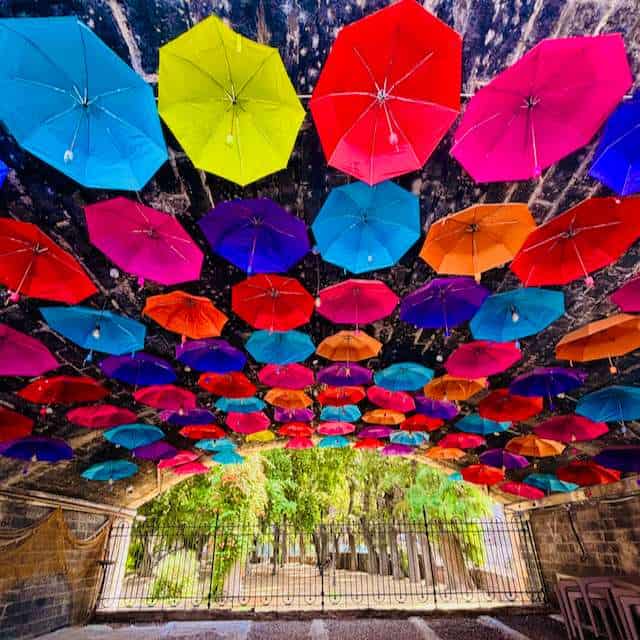

As the bus rolls in to Catania bus station, my first impression is, well, not great.
Though… it is not exactly my first impression. I have been here before. A long time ago, in my civil servant days, the Ministero delle infrastrutture e dei trasporti invited a Norwegian delegation, including me, to the annual bilateral negotiations, to be held in a former monastery in Taormina. Lovely place – both the monastery and Taormina. But that’s another story.
The nearest airport was Catania, so some of us decided to stay an extra day to have a look at the home town of famous opera composer Vincenzo Bellini. But to be honest, I don’t remember much. We got too busy with Sicilian wine. And seafood. And wine. And and … (Also another story.)
Well, this time there is no wine, and my eyes are wide open to Bellini’s city.
Getting off the bus from Palermo, I am not off to the best beginning. The area around the bus station is dreary, grotty, smelly, and in dire need of rebuilding, redesigning, re-everything. (Tip: get off the bus at Piazza Paolo Borsellino instead, and skip the station altogether. As a bonus, you will be 2, rather than 20, minutes away from the historic centre of Catania.)
The elephant
Meanwhile, back at the bus station, I trudge along in the August heat – it’s 38°C. I can practically feel the sun burn just thinking about it. Fortunately – and rather unusually – GPS girl and I are on speaking terms today. She shows me the way to just where I want to go: Piazza del Duomo, and the city’s icon: Fontana dell’elefante – the elephant fountain.

Conveniently, there is a restaurant on the piazza, where I can sit in the shade with a cool drink and a front row view of the famous elephant.
So what’s the story of the elephant, you’re wondering? Not exactly local wildlife, is it?
According to a local legend, a dwarf elephant once lived in Sicily. This was back in the Upper Paleolithic era, i.e. the final stages of the last Ice Age, somewhere between 10,000 and 35,000 years ago. Now, this was no ordinary elephant. Despite being so small, it managed to protect the original people here from all other dangerous animals, and they in turn erected a statue in its honour. Or, their descendants, at least. The statue is carved from lava stone, and is a symbol of Catanians’ resilience. (I feel they should stick with that, and lose the whole dwarf elephant thing).


Dolce far niente – sweet idleness
I end up staying for a while, scribbling, scrolling, looking at the elephant, and doing a good bit of nothing, other than making up elephant stories in my head. (I’ll spare you the details.) In fact, I could have stayed in just this spot until dark and then a bit. But alas, I am merely passing through on the way home from Lampedusa, and have a flight this very evening. So can’t just sit about all day. Time to go out and explore!

Catania: The Baroque Heart of Sicily
Since I was here last, UNESCO has awarded World Heritage status to Catania’s historic centre, as one of 8 towns in Val di Noto. Val, in this case, does not mean valley, but province. The province of Noto. (‘Val’, in case you wondered, is derived from the Arabic word wilāya, from the time Sicily was under Arab rule, as the Emirate of Sicily.)
The other 7 towns are Caltagirone, Militello Val di Catania, Modica, Noto, Palazzolo, Ragusa and Scicli, and they were all rebuilt in 1693, after the worst earthquake in Italy’s documented history. After the earthquake followed devastating tsunamis that wiped out almost two-thirds of Catania’s population.
Sensibly, the 8 towns were rebuilt with new catastrophes in mind. This has always been a high-risk area, for earthquakes and tsunamis, and also for eruptions from Mount Etna, the most active volcano in Europe, looming over the city.

Case in point: Etna herself decided to erupt in the early hours on the very day I arrived in town.
Catania: Style and substance
Back in 1693, the architects sensibly decided to create more secure and stable buildings. But they also wanted to retain the fashionable style of the era, Late Baroque. After all, why should you have to choose? Let’s make it snazzy and solid, they must have said. Style and substance!
My primary purpose for this day in Catania then, is to soak up a bit of atmosphere under the watchful eye of a volcano, and to explore baroque splendour risen from the ashes of the past. Unfortunately, I don’t have time to do a round of all the towns in Val di Noto this time, so Catania it is.


The specifics of the redesign included a central piazza, with streets branching out in a grid pattern. Important buildings, such as palaces and churches, were focus points along these streets.
Sant’Agata: a #metoo story from the year 251 CE
The Duomo – cathedral – was originally built in the late 11th century, but various earthquakes – and Mount Etna – have destroyed it several times over the years, so the one you’re looking at today, is from 1711. Late Baroque style.

Basilica cattedrale di Sant’Agata. That baroque facade! Isn’t it deliciously flamboyant?
The Duomo is dedicated to Sant’Agata, patron saint of Catania. There is of course a story here as well – and a much better one than the elephant legend, I think. You see, the tale of Agata is a 3rd century #MeToo story.
At 15, Agata took a vow of virginity. But Roman governor Quintianus, did not accept that. ‘Marry me,’ he said. Again and again. ‘Absolutely not,’ said Agata. She says no, but she really means yes, he probably thought, like so many before – and after – him.
‘Then I’ll report you for being Christian,’ he said. ‘You will be tortured and possibly killed.’
‘Jesus Christ, Lord of all, you see my heart, you know my desires. Possess all that I am. I am your sheep: make me worthy to overcome the devil,’ she prayed. Quintianus, on the other hand, was not deterred. He changed his tactics and sent her to a brothel, where the wicked matron Aphrodisia was tasked with changing Agata’s mind.
Nope, that didn’t work either. He finally lost his patience, and had her whipped, stretched on a rack, torn with iron hooks, burnt with torches, and her breasts torn off with tongs.
But Agata stayed true to her calling. Quintianus, now surely insane with fury, said ‘If you won’t marry me, you’ll burn at the stake.’
Well, there she was, turning on a furnace with burning coal and broken glass, naked. But then nature stepped in. Just then, there was an earthquake, which killed the evil Quintianus. Agata was released from the fire and brought to prison instead, where she eventually died in 251 CE.
Today, she is patron saint of Catania and various other places in the Catholic world, as well the guardian angel of breast cancer and rape victims, wet nurses and martyrs in general. And if you want to be protected from fire, earthquakes and that temperamental Etna, Agata is your girl.


The good Agata on the left here
In addition to the Duomo, the World Heritage listing here on the piazza, include Palazzo del Seminario dei Chierici – the museum of the diocese,

– and Palazzo degli elefanti – City Hall.

And just round the corner is Chiesa della badia di Sant’Agata – Church of the Abbey of Saint Agata.

So important is our Agata, there is both a cathedral and a church and abbey dedicated to her. And well deserved, I think, considering what she had to go through in her short life.
What else?

- There is more to Catania than architecture, history and world heritage, of course. Fresh seafood is a speciality in this city on the Ionian Sea. For most, La Pescheria, the fish market, is a highlight with its distinctive sounds and scents. Me, I hurry through, there’s just something about the combination of the smell of food and very hot weather that makes me a bit queasy.
- Catania has interesting black sand beaches, telling the tale of Etna’s many blow-outs. And out in the countryside, that same volcano is responsible for creating perfect wine-growing soil.
- As you may have gathered, Catania has taken colourful umbrellas to new heights. They are everywhere, and I think it works well in this baroque bonanza.

- Finally, and on top of my list for next time here: you can wander up to the summit of Etna herself. Since you are a reader of this blog, I take it for granted that you have heaps of common sense, and would not even consider attempting this hike on your own. Bring solid hiking shoes AND hire a local guide, or take a tour! I’ll just put this up here once more, as a reminder.

4 August 2024

Late Baroque Towns of the Val di Noto (South-Eastern Sicily) is a UNESCO World Heritage site.
Here are more UNESCO World Heritage sites around the world.
Please visit:
Our Sponsor
